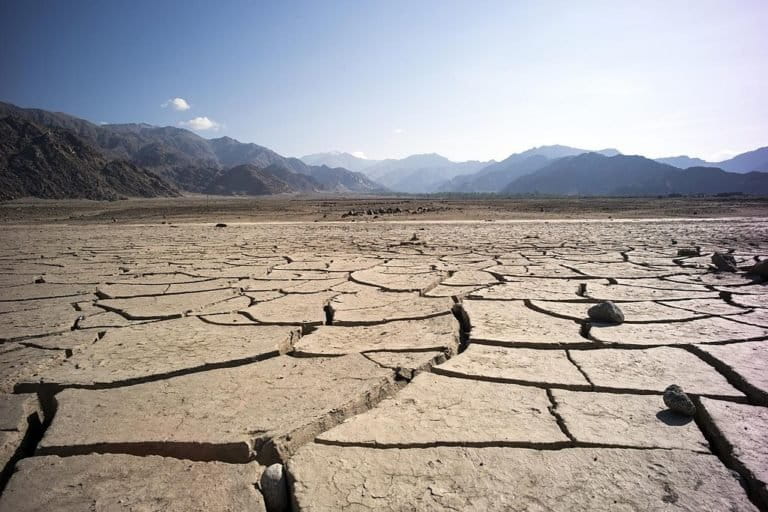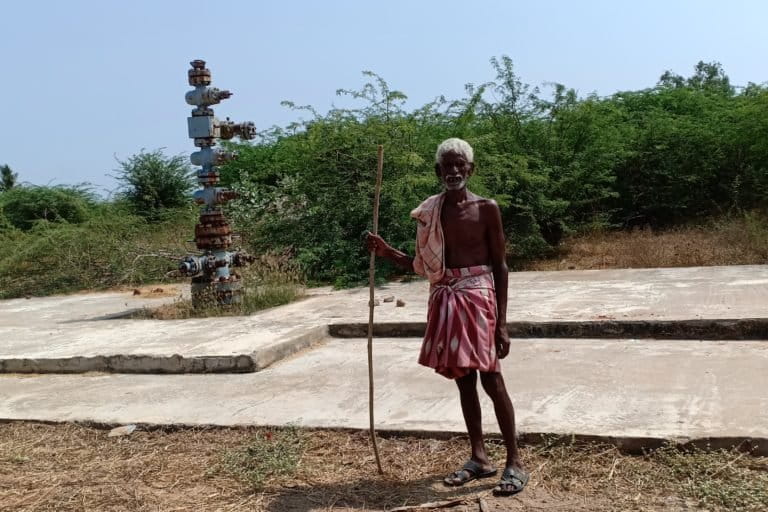- It has been the year of elections in India, starting with parliamentary elections at the start of 2019 to the recently concluded Jharkhand state elections. The election fever will continue to 2020 as the country’s capital goes to polls early next year.
- Mongabay-India has been tracking the elections all through the year, publishing over 100 stories and videos in 2019 which explored links between environmental issues and the election discourse.
- The stories focused on air and water pollution, clean energy, forests, water shortage, waste management, urban ecology, clean rivers, agricultural issues, droughts and floods. Here are some of the selected stories.
2019 was the year of elections. Starting with the biggest festival of democracy – the elections to the parliament – India witnessed elections every few months at various levels of the country’s governance structure. Elections to the state legislative assembly of Jharkhand wrapped up the election season this year which will continue to early next year with elections to the country’s capital, Delhi.
What remained a common link in all the elections throughout the year was the fact that environmental issues were gaining centre stage and in some cases, even becoming the top issue among candidates, just before the elections.
India is yet to have a national-level ‘green party’, a political outfit that focuses mainly on environmental issues. But whether they are taken up at the political level or not, it is clear that environmental issues are connected to our daily lives. This connection was highlighted by Mongabay-India’s staff writers and contributors in our Environment and Elections series.
Over the past 12 months, we have done over a 100 stories that focused on environmental issues in the election discourse — starting from the elections to Lok Sabha, the house of elected representatives of India’s parliament, and continuing all the way down to the elections to legislative assemblies of Maharashtra and Haryana in October 2019. Environmental issues related to jal, jungle, zameen (water, jungles and land) were also the focus in the recently-concluded Jharkhand legislative assembly elections whose results were announced on December 23, 2019.
Our stories looked at election campaigns and promises related to environmental issues like air and water pollution, water, farmer (agricultural) issues especially the ones linked to climate change like increasing droughts and floods, high-intensity rainfall, waste management in urban and rural areas, rights of tribal communities, human-wildlife interaction, energy including renewable power, coasts and land rights.
We spoke to political parties, environmentalists, industry associations, farmers, tribal communities, conservationists and more for an inclusive perspective on how the environment impacts everyone. Whether it was farmers’ widows responding to apathy by fighting elections or how the central government proposed an overhaul of the environmental clearance process in the midst of national elections, we had it covered. Our work also included a post-election result analysis of what the return of Prime Minister Narendra Modi-led central government meant for policies related to India’s environment.
Will environmental issues continue to impact the preference of voters? With the attention that cleaning of river Yamuna and air pollution are getting in Delhi, where elections to the legislative assembly are scheduled in January-February 2020, we are convinced that the ‘E’ in elections could very well stand for ‘Environment’.
Here’s a selection of some of the most striking stories in our ‘Environment and Elections’ series:
Environment gets voted into party manifestos
Mongabay-India analysed manifestos of several national and regional parties in the run upto 2019 elections to India’s parliament and found that environmental issues like clean air, water, waste management and clean energy have become a prominent part of the election discussions. The manifestos had a special focus on the issues related to the agricultural sector, tribal communities and forest dwellers.

School children in Assam produce their agenda for the national elections
About 500 girls from Assam, aged 14 to 19, produced a ‘Children’s Agenda’ for the 2019 national elections, focusing on health, nutrition, water, sanitation and hygiene and education and protection of children. The group approached politicians to include concerns such as flood-resilient infrastructure in election manifestos for the 2019 general elections.

Firewood ignites political cauldron in Manipur
With the delay in delivery of refills, poor connectivity to the centre and other barriers, villagers of Manipur have reverted to using firewood from the forest for their daily cooking needs even though they have valid Liquefied Petroleum Gas (LPG) connections.

[Video] From UP to Delhi, polluted Hindon river is affecting the health of many
Even though the authorities have been pulled up by the National Green Tribunal many times, the polluted waters of Uttar Pradesh’s Hindon river continue to impact the health of millions of residents of villages near the river banks. The impact continues further to the residents of Delhi who then consume the agricultural produce, grown using Hindon’s polluted water.

Nature and tribal welfare takes a back seat during the elections in the Nilgiris
The Nilgiris constituency of Tamil Nadu has the largest proportion of the tribal population in the state and the main issues impacting them in the run up to the elections were a fair and transparent implementation of the Forest Rights Act, jobs, health and education. But rights activists worry that the vote of the tribal community carries very little weight.

Aarey “forest” has fired-up Mumbai’s poll scene
A metro car depot proposed at Aarey milk colony in Mumbai turned out to be an important electoral issue in the state elections. In addition to the opposition alleging that the project that is expected to impact 2,646 trees destroying the Mumbai’s ‘green lungs’ and floodplains of Mithi river, it also became a bone of contention between political allies like Bharatiya Janata Party and Shiv Sena with dramatic twists as the parties battled it out. The battle between infrastructure development and environment has been a constant one in the maximum city.

The burning coalfields of Jharia belch poison for local residents
Elections have come and gone but the lives of around half a million people in Jharia in the eastern state of Jharkhand continue to be at risk from land subsidence over abandoned coal mines, where fires have been raging for over a century. A plan to relocate people to safer areas is at a slow pace, with 3,000 families out of 140,000 rehabilitated so far.

In Marathwada the queues are for collecting water during this election season
Water is at the centre of many conflicts in India and Maharashtra’s Marathwada is known for severe water shortage. Even as the tempo for national elections was reaching a crescendo, the Marathwada districts of Maharashtra continued to suffer under a severe drought.

India’s millennium city is choking
The glitz of Gurugram, Haryana, attracts many but the city is slowly choking. Gurugram is counted among the worst polluted cities in the world and, in 2018, it was declared the worst polluted in an international survey. The issue of air pollution and destruction of the Aravalli range, which are the city’s green lungs, turned out to be an important issue for voters.

As oil spills into Kaveri delta, anger spills into the election discussions
The union government’s move to allow public sector Oil and Natural Gas Commission (ONGC) and corporate major Vedanta to facilitate a multi-billion rupee hydrocarbon project to extract fossil fuels along with methane, propane and butane from Kaveri Delta region irked the farmers. The farmers who were already disturbed by erratic water flow in the river turned it into an election issue.

